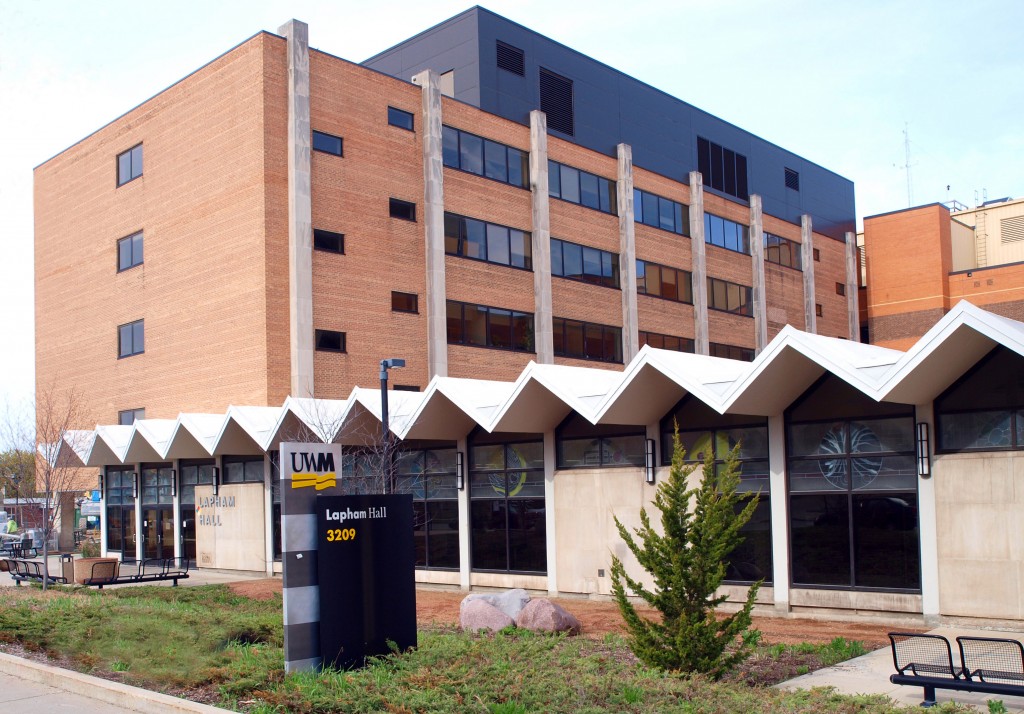
Lapham Hall
The Department of Biological Sciences at UWM houses state-of-the-art facilities and resources for studying basic cell biology, microbiology, molecular biology, genomics, ecology and evolutionary sciences.
Biotechnology Facility
The Biotechnology Facility is available to support research in cell biology, biochemistry, molecular biology, and large-scale production of secondary metabolites. Available equipment includes modern HPLC and FPLC chromatography systems, pulse-field and 2-D gel electrophoresis systems, a computer controlled fluorescence microscope with digital imaging, an automated UV/Vis microtiter plate reader, spectrophotometers and a fluorescence spectrum documentation system. The facility also includes gel-documentation systems, ultracentrifuges, high-throughput PCR cyclers, and state of the art real-time RT PCR equipment. Two large fermenters for steady state microbial growth are also available. Flow cytometry facilities include a 4-color BD FACSCalibur flow cytometer, a 10-color FACSAria III sorter (Zilber School of Public Health) and FlowJo analysis software.
Microscopy and Imaging
Our Electron Microscopy Facility includes a Hitachi H-7650 transmission electron microscope and a Hitachi S-4800 cold cathode field emission scanning electron microscope with a Bruker EDS system for elemental analysis. Ultramicrotomes, critical point dryers, vacuum evaporators, sputter coaters and fully equipped darkrooms are also available. Light microscopy facilities include several brightfield photomicroscopes, and an upright Leica confocal microscope system with 5 laser lines.
Greenhouse
The 9,625 square foot Greenhouse provides an open, flexible environment for research. The facility is divided into 3 wings, with 17 separate rooms and includes an expanded head house, wet lab space, a vibration lab, and 1,200 square feet of outdoor planting beds. Our plant collection comprises ~672 species representing over 100 plant families, showcasing a range of plant biodiversity. An extensive plant collection from Wisconsin and other areas such as the American Southwest, Australia, Northern Europe, and Alaska is available.
UWM Saukville Field Station
Biological Sciences faculty and students have the opportunity to conduct field research at the UWM Saukville Field Station. The Station is located adjacent to the 2200-acre Cedarburg Bog, providing access to one of the largest and most diverse wetlands in southern Wisconsin. The Saukville Field Station is home to three State Natural Areas that include Cedarburg Bog SNA, Sapa Bog SNA, an acidic black spruce bog, and Cedarburg Beech Woods SNA, an old growth beech-maple forest. The Station also manages six outlying properties (including Neda Mine and Benedict Prairie) and the Downer Woods, located on the main UWM campus.